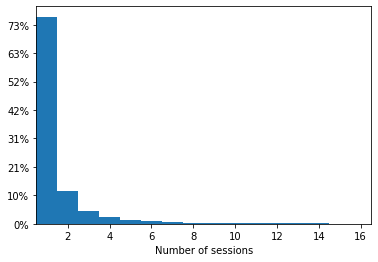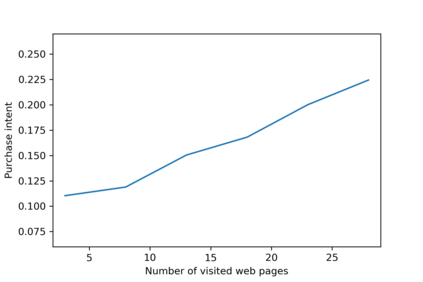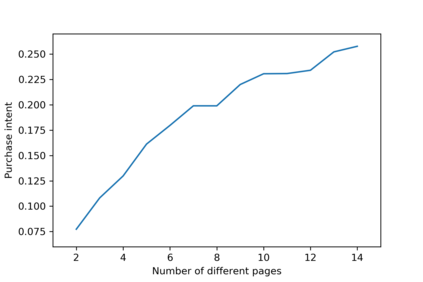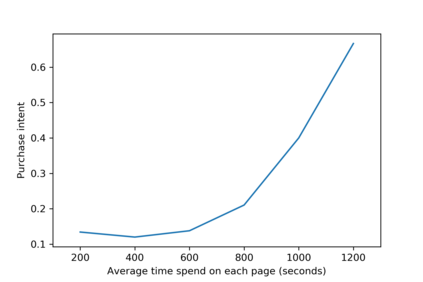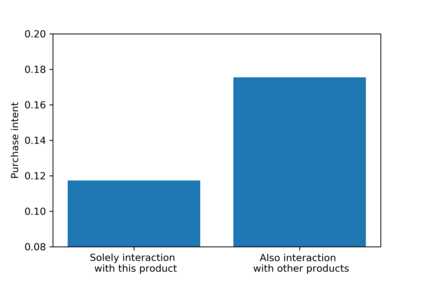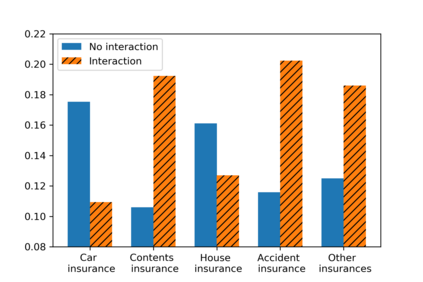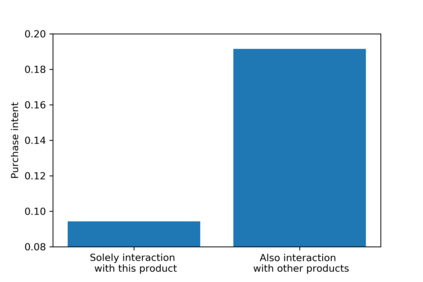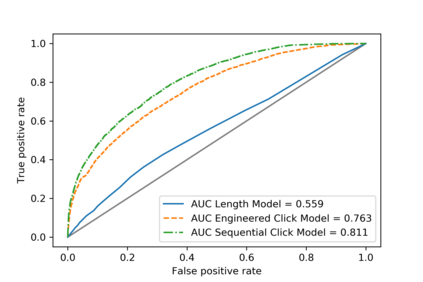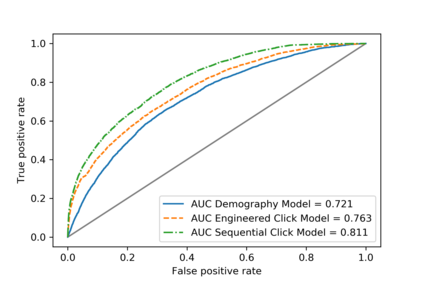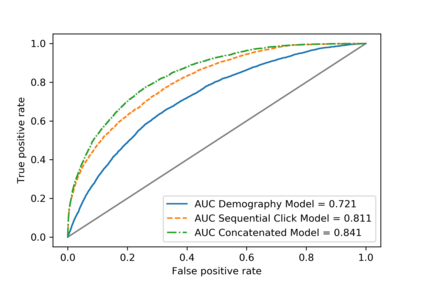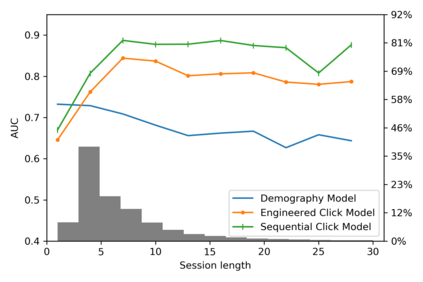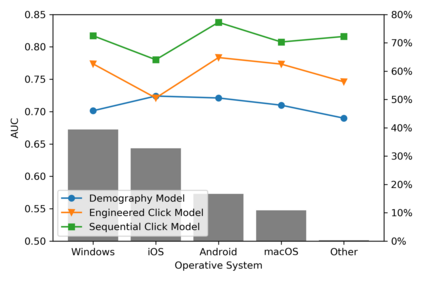This thesis contributes a structured inquiry into the open actuarial mathematics problem of modelling user behaviour using machine learning methods, in order to predict purchase intent of non-life insurance products. It is valuable for a company to understand user interactions with their website as it provides rich and individualized insight into consumer behaviour. Most of existing research in user behaviour modelling aims to explain or predict clicks on a search engine result page or to estimate click-through rate in sponsored search. These models are based on concepts about users' examination patterns of a web page and the web page's representation of items. Investigating the problem of modelling user behaviour to predict purchase intent on a business website, we observe that a user's intention yields high dependency on how the user navigates the website in terms of how many different web pages the user visited, what kind of web pages the user interacted with, and how much time the user spent on each web page. Inspired by these findings, we propose two different ways of representing features of a user session leading to two models for user click-based purchase prediction: one based on a Feed Forward Neural Network, and another based on a Recurrent Neural Network. We examine the discriminativeness of user-clicks for predicting purchase intent by comparing the above two models with a model using demographic features of the user. Our experimental results show that our click-based models significantly outperform the demographic model, in terms of standard classification evaluation metrics, and that a model based on a sequential representation of user clicks yields slightly greater performance than a model based on feature engineering of clicks.
翻译:本论文有助于对使用机器学习方法模拟用户行为的公开精算数学问题进行结构性调查,以便预测非人寿保险产品的购买意向; 公司了解用户与其网站的相互作用,因为网站对消费者行为有丰富和个性化的洞察力,这是很有价值的; 大多数现有的用户行为模型研究旨在解释或预测在搜索引擎结果页面上点击,或估计赞助搜索的点击率。这些模型基于网页用户检查模式的概念和网页对项目的表述。 调查用户在商业网站上预测购买意向的模拟行为问题,我们观察到,用户的意图产生高度依赖用户如何浏览网站,因为用户所访问的网页多、用户与每个网页互动的网页种类以及用户在每个网页上花费多少时间。根据这些研究结果,我们提出了两种不同的方式,代表用户会议的特点,从而导致两种基于用户点击模型的购买预测:一种基于Feed Front Neural网络的用户行为,另一种是基于两个内部网络的用户意图,我们通过两个内部网络网络,对用户如何浏览网站进行高度依赖:用户如何浏览网站的多少个不同网页网页; 用户与用户互动的准确性特征,我们如何评估了我们根据用户的用户的用户的统计模型,从而大大地评估了一种基于用户的用户的用户的统计模型,从而更精确地标定价评估。

